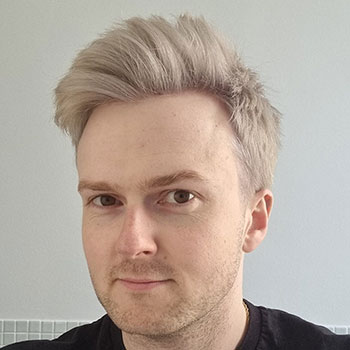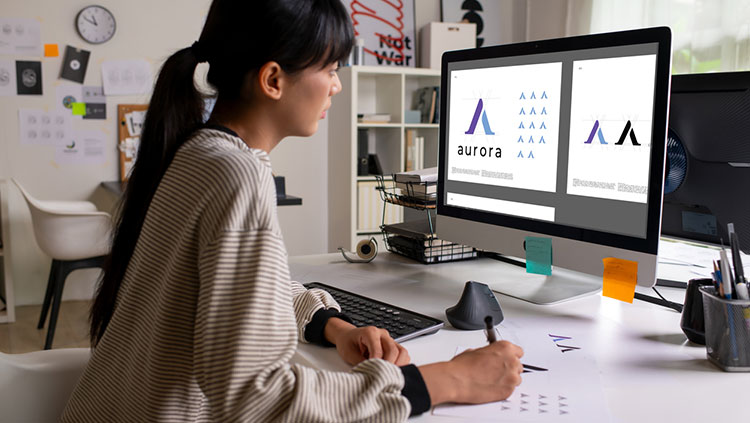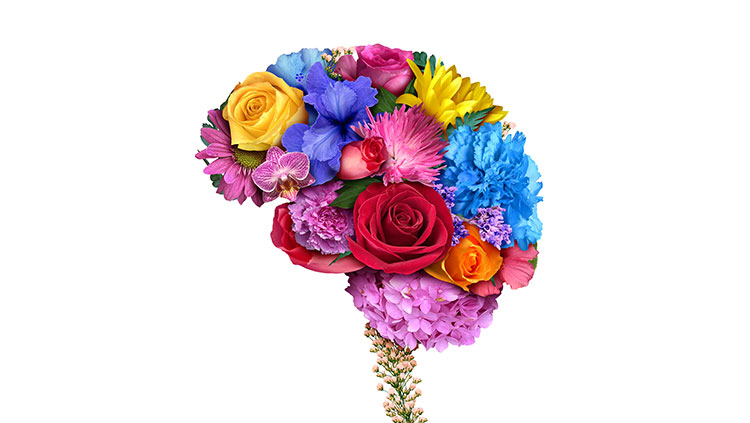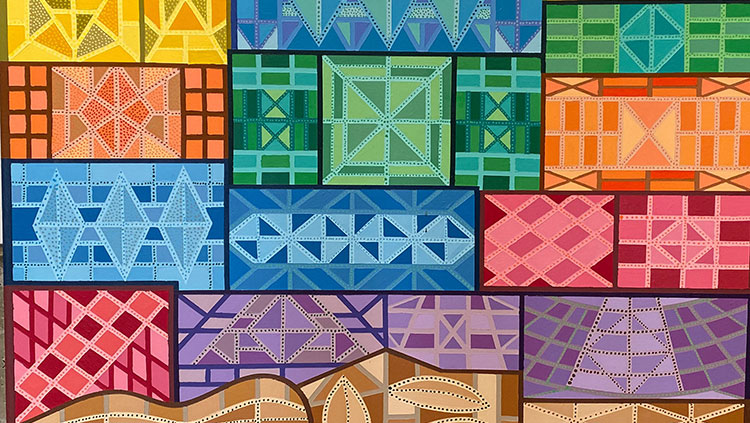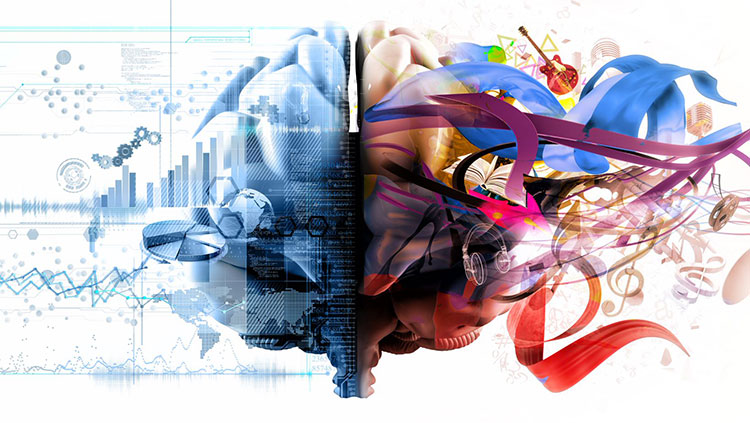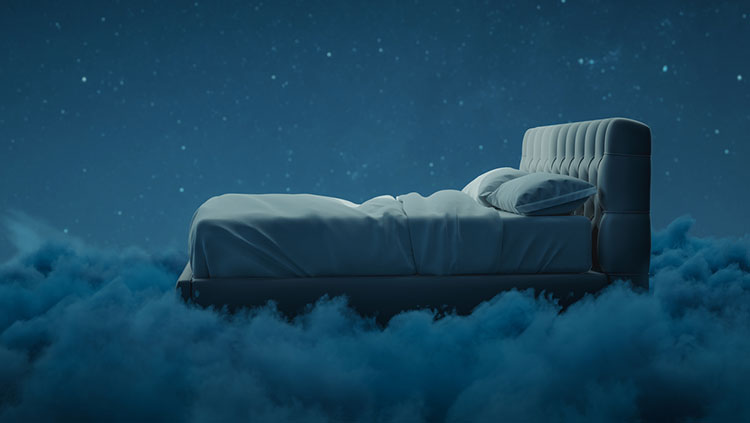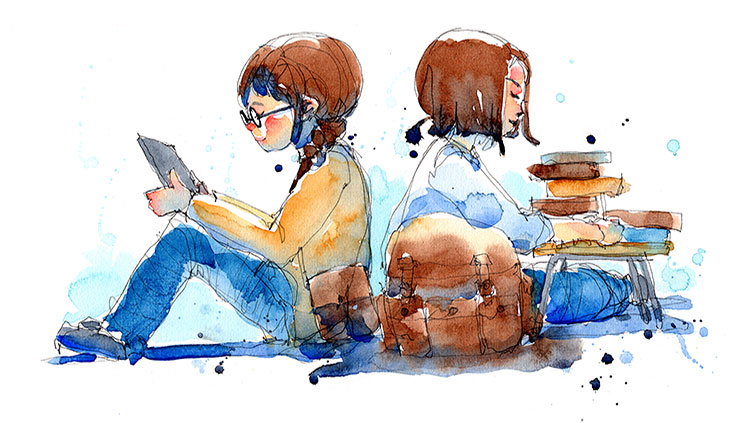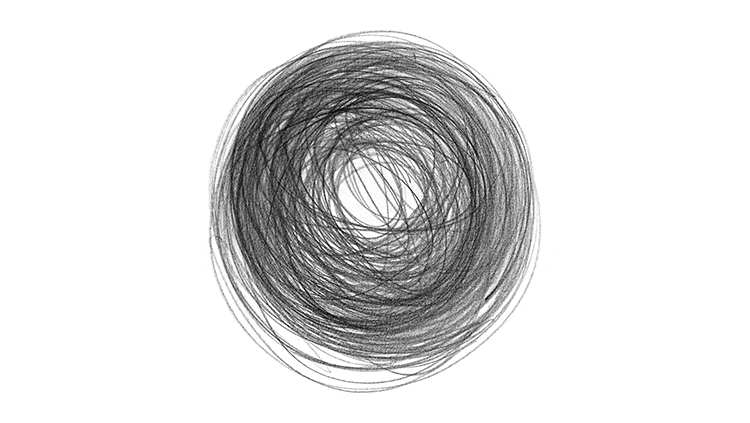Can AI Truly Match Human Creativity?
- Published13 Aug 2025
- Author RJ Mackenzie
- Source BrainFacts/SfN
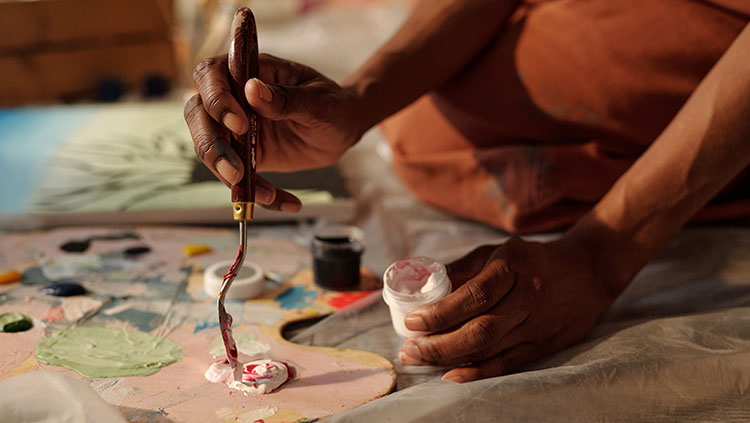
From conversational chatbots to the AI overview accompanying Google queries, artificial intelligence is rapidly altering how we engage with the digital world. Capable of generating photos, videos, and texts, these outputs feature prominently on social media feeds. Users of these platforms often find themselves scrolling through a torrent of low-quality content referred to as “AI slop.” But AI-generated content in some cases strongly resembles media created by real people and, as a result, users may struggle to tell the difference.
The recent avalanche of AI-generated media online has sparked a debate around creativity in the growing field of neuroAI, which combines the disciplines of neuroscience and computer science. As machine-made media challenges the meaning of creativity, some experts warn that this technology could complicate the opportunities and livelihoods of humanity’s next generation of artists.
Understanding Human Creativity
Digital computing and the academic effort to understand creativity have been around for roughly the same amount of time. In 1950, four years after the U.S. Army debuted the first digital computer, American psychologist J. P. Guilford broke new ground when he published a paper titled Creativity. In the paper, he predicted these “thinking machines” would “make man’s brain relatively useless,” and he emphasized the importance of researching and promoting creativity, especially among children. Today, while there’s plenty of debate around how technology has influenced the human mind, experts across multiple fields have tried their hand at defining and measuring creativity.
Researchers take various approaches to this task, like studying the personality traits of creative individuals or assessing the characteristics of creative works. Cognitive neuroscientists, meanwhile, typically focus on “the creative process” itself, said Indre Viskontas, an associate professor of psychology at the University of San Francisco.
No single brain region houses creativity. Instead, this process relies on collaboration between various areas and networks. Viskontas pointed to a four-stage model of creative thought published in 1926 by early creativity researcher Graham Wallas. Neuroscientists have since identified brain networks that are primarily driving each of the stages in Wallas’s model.
Wallas defined the first creative stage as preparation, or the phase during which a creator builds skills or knowledge. “That tends to be pretty reliant on the [brain’s] executive control network, largely driven by [the] prefrontal cortex,” Viskontas explained. Wallas’s second stage is an incubation step, when the creator’s mind wanders and stops focusing on the task at hand. Mind-wandering activates the default mode network, which also governs daydreaming.
“The third phase,” Viskontas said, “is the ‘aha’ moment.” These moments of insight are associated with activity in the parietal cortex. The final stage of creativity is verification, during which the creative idea is evaluated and ultimately brought into reality. Like preparation, this stage involves the brain’s frontal executive control networks.
Neuroimaging allows researchers to observe structure and activity within the brain and has generated breakthroughs in creativity research. “What we see in a number of creative professionals and through creativity training is that the ability to switch between these networks improves,” Viskontas said. This finding suggests increased connectivity and collaboration between brain networks may be key to the creative process.
Measuring Creativity
Using fMRI or other types of neuroimaging is costly and cumbersome. For large-scale investigations into creativity, researchers needed to develop lower-tech, quick, reliable, and easy-to-use tests.
Jay Olson, a psychology researcher at the University of Toronto, defines creative thinking by two separate types of thought: convergent thinking and divergent thinking.
Convergent thinking involves focus, while divergent thinking — which Olson studies — is linked to mind wandering. “At the core, divergent thinking is like trying to generate a bunch of ideas that are very different from each other,” Olson explained.
Olson developed a test called the divergent association task (DAT) which measures divergent thinking by testing participants’ ability to come up with semantically different words. When asked to think of 10 other words in response to the word “cooking,” for example, a participant who comes up with obvious correlates like “oven” or “knife” would score lower than someone who answers with words that can’t be so easily linked, like “phosphorus” or “aardvark.”
Amid the rise of AI, Olson and his colleagues decided to run a similar test on leading AI models and compare those results to 100,000 individual human responses to the DAT. They released their findings in a 2024 preprint, concluding AI models, in some cases, scored better on these tests compared to people.
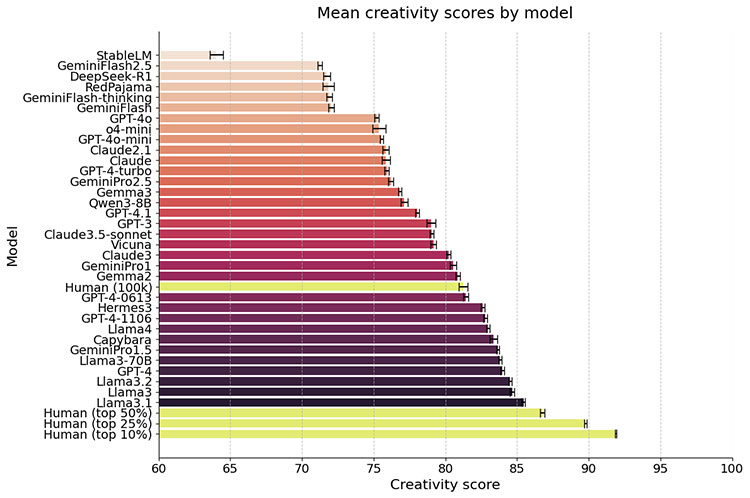
“Although the top creative individuals still outperformed large language models on the creativity test, some of the models — such as GPT-4 — surpassed human-level creativity when taking the mean performance across a large sample of humans," said Karim Jerbi, who co-authored the preprint and directs the UNIQUE Quebec Neuro-AI research center, an institution dedicated to exploring the burgeoning field of neuroAI. The authors said their work suggests AI models can indeed emulate human creativity. But many researchers remain unconvinced that the products of a person’s creative thought process can or should be compared to what AI models generate.
Are AI Models Truly Creative?
Among this group of skeptics is Selmer Bringsjord, a computer and cognitive science professor at the Rensselaer Polytechnic Institute. In his view, the content AI models produce is a “matter of analogy.” That’s because these systems are trained on a vast swath of creative works, and their outputs are basically remixes of information packaged within those data sets.
In 2001, decades before Olson designed the DAT, Bringsjord co-authored a benchmark of AI creativity called the Lovelace Test, named after computing pioneer Ada Lovelace. An AI model could only be considered truly creative if it produced an output which could not be explained by the engineer who designed it. If a model trained on sci-fi novellas started outputting watercolor paintings, for example, it might pass this test. While the complex artificial neural networks powering AI today produce outputs that can be difficult for their creators to explain, Bringsjord argues these models are not generating anything truly surprising based on our understanding of how they were designed.
I believe intentionality plays an important role in human creativity. — Mark Runco
Bringsjord isn’t alone in his skepticism. Psychologist Mark Runco, director of creativity research and programming at Southern Oregon University, also believes current AI models aren’t authentically creative. For Runco, the difference lies in motivation. All human creatives consciously decide to pick up a paintbrush or start typing on a keyboard. Generative AI models, by comparison, respond to prompts in an echo of what the person directing them wants.
“I believe intentionality plays an important role in human creativity,” Runco said. From his perspective, while AI models may produce more sophisticated results, they haven’t advanced beyond the fundamental capabilities of early computers.
AI and Creative Jobs
Attitudes toward creativity vary across the AI field. Some researchers believe intention doesn’t matter so long as models can generate novel content, Runco noted. If content consumers begin to share this view, experts say creative fields could face an existential threat from AI.
Bringsjord has “nothing comforting to say” on this subject. He suggested education systems could encourage students to pursue careers in fields AI can’t yet replace like nursing, the trades, or even art reliant on physical media, like sculpting. But this approach may ultimately result in a smaller pool of defined creative occupations, which Bringsjord doesn’t believe would be a good thing for the next generation of professionals. A person’s career, he said, should be “where your gifts are, and what you love, and what you want to aim for.” But he fears creatives may nevertheless one day find themselves pursuing careers which work around AI, rather than relying solely on their own creative merits.
Although there could still be an ethical path forward which ensures enduring respect for human creativity even as AI models become more sophisticated, Runco isn’t optimistic that our society will pursue it. “I'm afraid we're not going to make the right decisions,” he warned.
CONTENT PROVIDED BY
BrainFacts/SfN
References
Bellemare-Pepin, A., Lespinasse, F., Thölke, P., Harel, Y., Mathewson, K., Olson, J. A., Bengio, Y., & Jerbi, K. (2024). Divergent Creativity in Humans and Large Language Models. arXiv. https://doi.org/10.48550/arXiv.2405.13012
Bringsjord, S., Bello, P., & Ferrucci, D. (2000). Creativity, the Turing Test, and the (Better) Lovelace Test. Minds and Machines, 11. https://doi.org/10.1023/A:1011206622741
Chen, Q., Kenett, Y. N., Cui, Z., Takeuchi, H., Fink, A., Benedek, M., Zeitlen, D. C., Zhuang, K., Lloyd-Cox, J., Kawashima, R., Qiu, J., & Beaty, R. E. (2025). Dynamic switching between brain networks predicts creative ability. Communications Biology, 8(1), 1–13. https://doi.org/10.1038/s42003-025-07470-9
Guilford, J. P. (1950). Creativity. American Psychologist, 5(9), 444–454. https://doi.org/10.1037/h0063487
Kounios, J., & Beeman, M. (2014). The Cognitive Neuroscience of Insight. Annual Review of Psychology, 65, 71–93. https://doi.org/10.1146/annurev-psych-010213-115154
Liu, C., Zhuang, K., Zeitlen, D. C., Chen, Q., Wang, X., Feng, Q., Beaty, R. E., & Qiu, J. (2024). Neural, genetic, and cognitive signatures of creativity. Communications Biology, 7(1), 1–14. https://doi.org/10.1038/s42003-024-07007-6
Olson, J. A., Nahas, J., Chmoulevitch, D., Cropper, S. J., & Webb, M. E. (2021). Naming unrelated words predicts creativity. Proceedings of the National Academy of Sciences, 118(25), e2022340118. https://doi.org/10.1073/pnas.2022340118
Sunavsky, A., & Poppenk, J. (2020). Neuroimaging predictors of creativity in healthy adults. NeuroImage, 206, 116292. https://doi.org/10.1016/j.neuroimage.2019.116292
Wallas, G. (1926). The Art Of Thought (1926). Watts and Co. http://archive.org/details/dli.ernet.527136
What to Read Next
Also In The Arts & The Brain
Trending
Popular articles on BrainFacts.org


